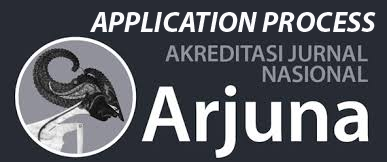Perpajakan Indonesia di Era Teknologi dan Keterbukaan Informasi Keuangan
DOI:
https://doi.org/10.57214/pengabmas.v3i1.540Keywords:
Digital taxation, Digital economy, Financial Information TransparencyAbstract
Digital economic transactions have emerged as a result of Indonesia's technological and financial information advancements. In order to optimize tax revenue, the Indonesian government adapt and respond to the growing prevalence of digital transactions, especially e-commerce. The primary obstacles include finding a clear definition for digital economic enterprises, enacting legislation governing digital transactions that are compliant with international standards, and allocating resources in a way that optimizes the advantages of digital economic transactions. By creating electronic platforms like DJP-online, the Indonesian government hopes to improve the ease and openness of the tax filing procedure. In an effort to maximize tax revenue in the digital age, tax advisors play a crucial role, and society must change to embrace technology. To ensure a smooth and successful rollout of the digital tax system, the Indonesian government must constantly update rules, enhance public education efforts, and improve online services. This community engagement activity discussed the material through online webinars, providing an accessible platform for all participants to gain insights into the digital taxation landscape and aiding the government in socializing regulations in the field of digital taxation
References
Chaidir, M., & Yulia, A. (2022). Pengaruh Tax Avoidance, Profitablitas dan Debt to Equity Ratio Terhadap Nilai Perusahaan. Ekonomika, 6(2), 404-23.
Kementerian Keuangan. (2020). Batasan Kriteria Tertentu Pemungut serta Penunjukan Pemungut, Pemungutan, Penyetoran, san Pelaporan Pajak Pertambahan Nilai Atas Pemanfaatan Barang Kena Pajak Tidak Berwujud dan/atau Jasa Kena Pajak Dari Luar Daerah Pabean di dalam Daerah Pabean Melalui P. Peraturan Direktur Jenderal Pajak Nomor PER-12/PJ/2020, 1–14.
Kementerian Koordinator Bidang Perekonomian Republik Indonesia. (2023). Ekonomi Digital Mesin Pertumbuhan Ekonomi Nasional Ke Depan. Siaran Pers HM.4.6/302/SET.M.EKON.3/08/2023.
Menteri Keuangan Repulik Indonesia. (2017). Undang-Undang Nomor 9 Tahun 2017. Rencana Umum Energi Nasional, 73, 1–6.
OECD. (2015). BEPS Actionpoint 1:Final Report. http://www.oecd-ilibrary.org.ez.urosario.edu.co/docserver/download/2314251e.pdf?expires=1429553838&id=id&accname=guest&checksum=446CDC8269DEAE27FEB0B6D9820B9960
Peraturan Pemerintah. (2017). Akses Informasi Keuangan untuk Kepentingan Perpajakan. PP No. 1 Th. 2017.
Rashika Sethi. (2023). Indonesia digital economy: Growth and opportunities 2023. Twimbit.
Statistik., B. P. (2022). Statistik Telekomunikasi Indonesia.








